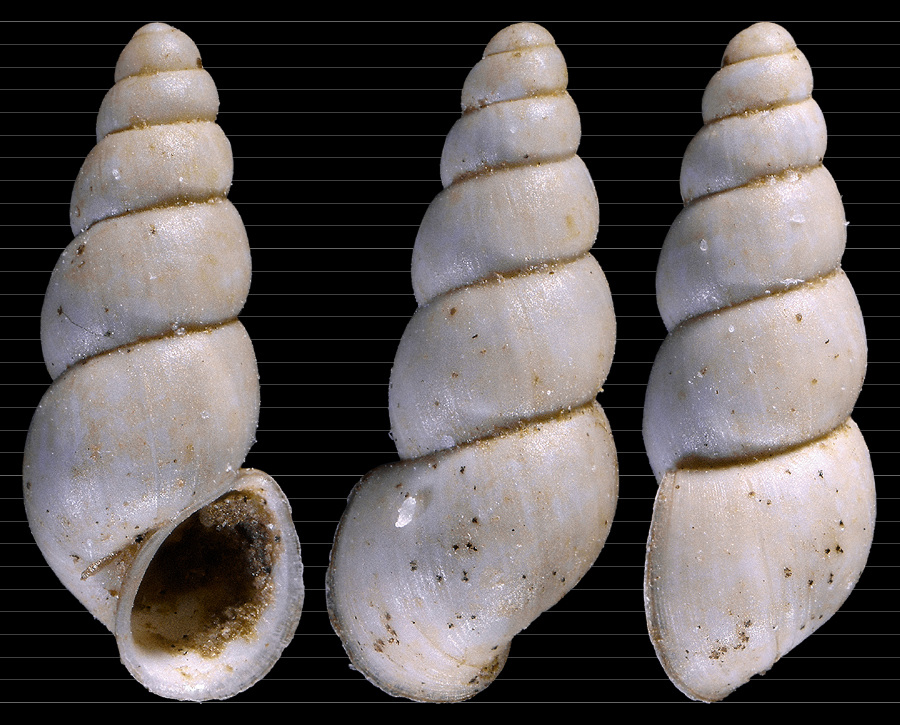Bythiospeum cf. Bythiospeum moussonianum (Paladilhe, 1869)

« Shell with a somewhat short conoid shape, very obtuse at the top, bulged at the base. Test a little thin, vitreous white, slightly horny, passing to a shiny white after the death of the animal; almost smooth, barely streaked longitudinally, shiny. Spire composed of five whorls, with variable growth; the first growing rapidly, the last three growing more and more slowly, the penultimate proportionally larger than the others; whorls affecting a rounded profile, especially towards the suture; suture deep; apex very obtuse, smooth, shiny. Umbilicus reduced to a shallow, very narrow and short slit. Aperture patulescent, oval-rounded, a little narrow at the top, with its long axis slightly inclined from right to left. Peristome thin, straight, continuous, slightly overturned on the columellar edge; columellar edge barely straight in the part contiguous with the penultimate whorl; outer edge weakly arched forward, leaving near the insertion a fairly large but shallow pleurotomoidal notch; lower edge protruding quite strongly from the upper edge. Operculum unknown. » – A. Locard: Contributions à la faune malacologique francaise vol. III, Paris 1882, p.21. Above: specimen with a well preserved lip, collected in some flooding deposits near the emergence of the Ain river (altitude ≈ 690m). 3mm.